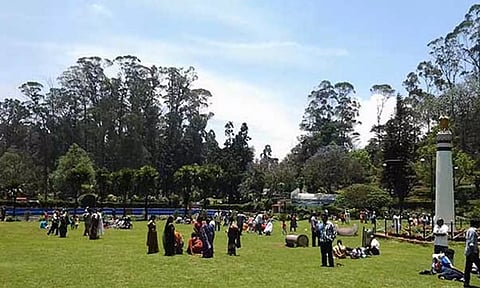

In a pushback to over-tourism in Tamil Nadu, the Madras High Court directed the district administrations of the Nilgiris and Kodaikanal to develop a system to provide e-passes to vehicles entering these highly sought-after hill stations during the summer. Aiming to regulate the entry of vehicles between the peak tourist season of May-June, the court asked the District Collectors of Nilgiris and Dindigul to develop a system/online application to enable the owners of vehicles visiting the hill stations to fill in particulars and generate an e-pass. Only such vehicles will be permitted entry. The bench added that the officials could exempt vehicles belonging to local residents, as well as commercial vehicles.
A few numbers might help make sense of the need to crack the whip. As many as 20,011 vehicles enter the Nilgiris every day, which includes 11,509 cars and 6,524 two-wheelers on an average during the peak season. The influx of vehicles has crippled traffic in these small towns. Locals have been finding it daunting to commute for their daily livelihoods, and even unable to access medical services in emergencies. The traffic bottlenecks have soured the tourism experience for many visitors. And the overcrowding has caused extensive, irreparable damage to the fragile ecosystem of the region, which is crisscrossed by elephant corridors.
The capping of tourism in hill stations is not a novel development. In February, the Uttarakhand govt had announced that it was ready to implement a green cess on vehicles from other states, following the model adopted by neighbouring Himachal Pradesh. The cess would be collected at toll plazas through FASTag, with amounts ranging from Rs 20 to Rs 80. Similarly, a year ago, Goa announced its plans to levy a green cess for vehicles coming in from other states. Stakeholders in the coastal holiday hub had welcomed the move saying it could help streamline tourist movement as well as bring in much needed revenue. Interestingly, six years back, the government think tank NITI Aayog recommended a green cess in the form of payments from service consumers to address the infrastructural demands of the Himalayan region.
And for good reason too, as over 100 million tourist footfalls are recorded in the mountainous belt annually and the number is expected to spike to 240 million by 2025. This puts pressure on the resources of the region, leading to inadequate solid waste management, increase in air pollution, the degradation of water sources, loss of natural resources, and destruction of biodiversity among others. The stance taken by various states in India is in line with the global trends.
Milan has proposed new regulations to reduce late-night activity _ with a ban on pizza and ice cream sales after 12:30 am on weekdays and 1:30 am on weekends. Concurrently in Venice, the municipality is piloting a tourist tax this spring, which requires day-trippers to pay an additional fee to enter the city. Amsterdam, on the other hand, went one step further and unveiled a policy which caps the number of overnight tourist stays per year to 20 million. It goes without saying that responsible and sustainable tourism is the only way forward. This is also an indicator to the government and private players to consider developing tourist infrastructure in lesser-known towns, and underserved regions, which could in turn, create a healthy economic ecosystem through hospitality.